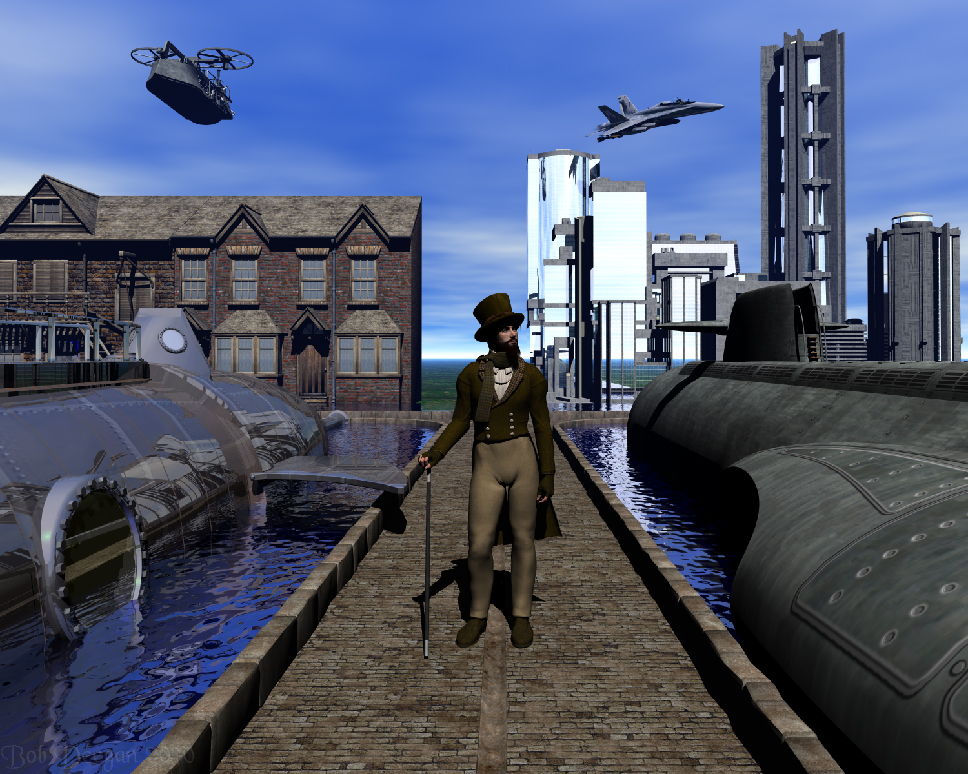
For the week including February 5, 2010

THE MAN WHO SAW TOMORROW
Monday marks the one hundred eighty-first anniversary of the birth of Jules Verne, the French writer whose books brought world acclaim to the genre we now call science-fiction. Today, almost everyone is familiar with at least some of his works like 20,000 Leagues under the Sea and Mysterious Island. Jules Verne (1828-1905) had a tremendous gift for story-telling, but what seems to have impressed people the most was his uncanny ability to predict future marvels of technology that we know today.
Most familiar is his submarine the Nautilus. It traveled around the world exploring the ocean’s depths. The double-hull design of Verne’s Nautilus is still used by our submarines today and the first nuclear powered submarine carried its name. In 1905, Verne told Popular Mechanics magazine that submarines would never be used for commercial travel, but would be best known for their peace-keeping use by the military.
In Master of the World, Jules Verne described automobiles capable of reaching unbelievable speeds of 120 miles an hour. In that same work he also described his Albatross, a craft he called an aeronef that flew through the air and was driven by propellers. Had he stuck with one of his original choices and called it an aeroplane instead, we would have no difficulty recognizing it.
Perhaps the most striking example of Verne’s predictions came in 1865 with the publishing of From the Earth to the Moon. In this adventure, where a passenger vehicle is shot from a great cannon for a voyage to the Moon, Verne explained his preferred choice of launching locations. He reasoned that the site should be in the United States below the 28th parallel of latitude -- in southern Texas or Florida. Although he considered places like Brownsville, Texas, he eventually settled his space base in southern Florida where great expanses of nearby water might also ensure a level of safety. Much later, what would become our NASA performed a similar search, deciding that our launch site should be below the 28th parallel in southern Texas or Florida. After considering and rejecting places like Brownsville, Texas, NASA placed Cape Kennedy not far from Verne’s choice of location. Not too shabby for a guy writing in 1865! But before you imagine that Jules Verne was a psychic, it’s probably best to tell you that he would have laughed at that idea. Verne diligently researched the best science of his day and consulted with the best experts, like the astronomers he consulted in planning his book, From the Earth to the Moon. It was those scientists who helped him place his site near the Equator, where Verne’s characters could best get a direct shot at the Moon while gaining a boost of energy from the Earth’s rotation.
As Verne described his cutting-edge science research to London’s Daily Mail, “It will perhaps surprise you to hear that I do not take especial pride in having written of the motor car, the submarine boat, and the navigable airship before they became actual realities. When I wrote about them as realities these things were already half discoveries.”If Verne were alive today, I wonder what would he see in store for us all tomorrow.
Unless otherwise indicated, all content of this web site is the copyright of Robert Deegan and all rights are reserved.
For more information, or to comment, please contact: Bob@NightSkies.org